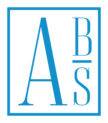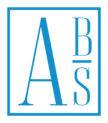Year-end tax strategies are essential tools for Canadians looking to save money on taxes, maximize their tax return, and ensure the best possible return on investments.
Maximizing Your Charitable Donations to Reduce Tax Liability
Charitable donations can significantly reduce your tax liability. When you make a donation to eligible organizations in Canada, you can claim both federal and provincial tax credits, leading to substantial savings.
Taking Advantage of RRSP Contributions to Lower Taxes
If you’re employed or self-employed, contributing to an RRSP is a great tool to lower your taxes. Not only does it help you save for retirement, but the contributions are also tax-deductible. RRSP contributions reduce your income in the current year and you will only pay taxes on this money when you withdraw it. You are essentially deferring your income to your retirement age when you will be in a lower tax bracket. Keep in mind that the Canadian government sets annual limits for RRSP deductions and any unused contribution room can be carried forward.
Making the Most of Homeowner Tax Benefits & Credits
In Canada, homeowners can avail themselves of several tax benefits. For instance, first-time homebuyers can claim the Home Buyers’ Amount, and those who make accessibility improvements to their homes might be eligible for the Home Accessibility Tax Credit.
Utilizing the Tax-Free Savings Account (TFSA)
While contributions to a TFSA are not tax-deductible, the income and gains generated within the account are tax-free, even upon withdrawal. When you are in a lower tax bracket contributing to your TFSA is a better alternative than contributing to an RRSP. Your TFSA contribution room grows each year even if you do not file a tax return or open a TFSA. CRA has clear guidelines for contributing to your TFSA.
Claiming the Home Office Deduction
The home office deduction is particularly relevant for many Canadians, especially with the rise of remote work. If you work from home and meet certain conditions set by the CRA, you may be eligible to deduct a portion of your home expenses on your tax return. Some of these expenses are utilities, property taxes/rent, insurance, and office supplies.
Splitting Income
This involves transferring income from a higher-income family member to a lower-income family member, who would be taxed at a lower rate. Common methods include spousal RRSP contributions and splitting eligible pension income with a spouse or common-law partner.
Claiming Moving Expenses
If you moved for work or school and your new home is at least 40 kilometers closer to your new workplace or school, you can deduct eligible moving expenses.
Conclusion
The Canadian tax code, while intricate, offers various strategies to maximize savings. By staying informed and possibly consulting with a tax professional, you can ensure that you’re taking full advantage of all the tax benefits available to you.






